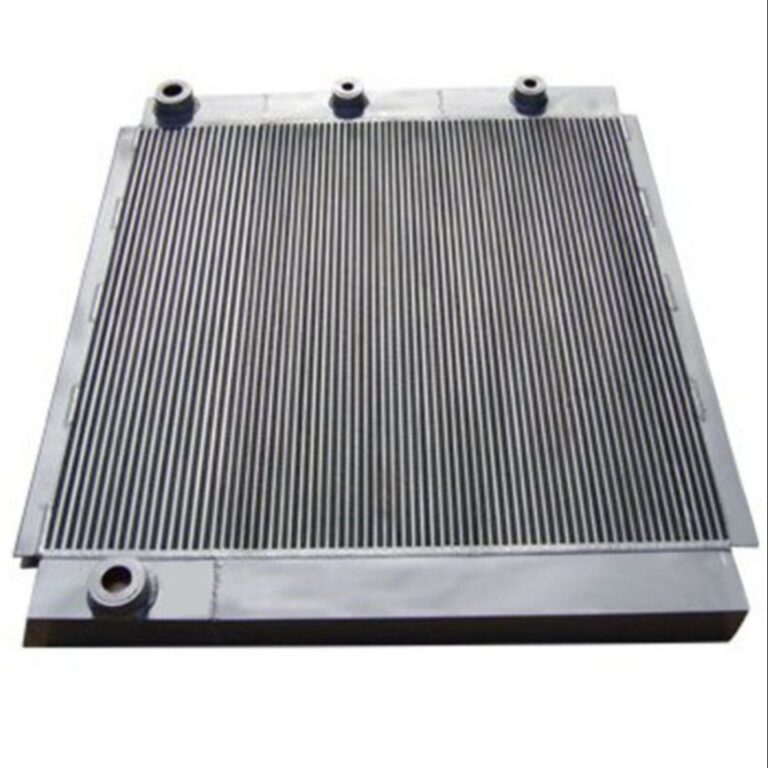Introduction
Air Compressor Coolers is a specialized heat exchanger designed to remove the excessive heat generated when air is compressed. During compression, air molecules are forced into a smaller space, causing a rapid increase in temperature. If this heat isn’t managed properly, it can damage downstream equipment, reduce system efficiency, accelerate component wear, and even increase the risk of system failure. Air compressor coolers solve this issue by transferring heat from the compressed air to a cooling medium — either ambient air (air-cooled) or water (water-cooled). These coolers are essential in industries that rely on clean, dry, and cool compressed air to ensure equipment longevity and safe, efficient operation.
Key Features of Air Compressor Coolers
High Heat Transfer Efficiency
Why it matters:
During compression, air temperatures can rise to 150°C or more. Efficient heat transfer is vital to bring this temperature down quickly without causing a significant pressure drop.
How it works:
Air compressor coolers use advanced designs like fin-and-tube arrangements, plate heat exchangers, or shell and tube systems with high surface areas to rapidly transfer heat from compressed air to the cooling medium.
- Counterflow or crossflow patterns are often used to increase heat exchange efficiency.
- Low-pressure drop designs maintain system performance while ensuring adequate cooling.
This improves overall plant efficiency, reduces energy costs, and protects expensive pneumatic tools and systems from damage due to excessive heat.
Corrosion-Resistant Materials
Why it matters:
Compressed air can carry moisture and contaminants, especially in humid or marine environments. If the cooler corrodes, it risks leaks, blockages, and contamination of the compressed air system.
How it works:
Air compressor coolers are built using materials that resist corrosion and erosion caused by moist, pressurized air:
- Copper and cupronickel tubes for excellent heat transfer and corrosion resistance in freshwater or seawater-cooled systems.
- Stainless steel (304, 316) for high durability, especially in industrial and marine conditions.
- Aluminium-fin tubes for lightweight, cost-effective air-cooled solutions.
This ensures longer service life, reduced maintenance frequency, and consistent cooling performance.
Compact and Modular Design
Why it matters:
Many industrial facilities have limited floor space and require equipment that’s easy to install, move, or expand.
How it works:
Air compressor coolers are engineered with:
- Compact footprints for tight installations.
- Vertical, horizontal, or stacked layouts to suit different spatial arrangements.
- Modular designs that allow adding or removing cooler modules based on future capacity changes.
This flexibility makes them perfect for industries where space optimization and future scalability are critical factors.
Easy Maintenance and Cleaning
Why it matters:
Over time, dust, oil mist, and scale can accumulate on cooler surfaces, reducing heat transfer efficiency and increasing the risk of overheating.
How it works:
Most air compressor coolers are designed for easy maintenance:
- Tube bundles, plate packs, or coils can be removed for mechanical or chemical cleaning.
- Air-cooled models feature easy-access doors or removable fin panels for cleaning.
- Integrated moisture separators and condensate drains safely remove water formed during cooling.
This lowers maintenance costs, reduces system downtime, and keeps your compressed air system performing reliably.
Working Principle
- Hot compressed air exits the compressor and enters the cooler.
- It flows through a network of finned tubes, plates, or coiled pipes.
- At the same time, a cooling medium (ambient air or water) flows around or against the compressed air.
- Heat transfers from the compressed air to the cooling medium.
- The cooled, dry air exits the cooler at a lower temperature, ready for downstream processes.
- During cooling, water vapor condenses and is captured by a moisture separator, then drained out to protect equipment.
This process improves overall air quality and system reliability.
Conclusion
Air compressor coolers isn’t just a support accessory it’s a vital part of every compressed air system. It plays a crucial role in reducing air temperature, removing moisture, protecting downstream equipment, and improving system efficiency. Whether you’re operating a small workshop or a massive petrochemical plant, investing in a high-performance, easy-to-maintain air compressor cooler helps reduce operational costs, extend equipment life, and ensure safer, more reliable air system operation.

